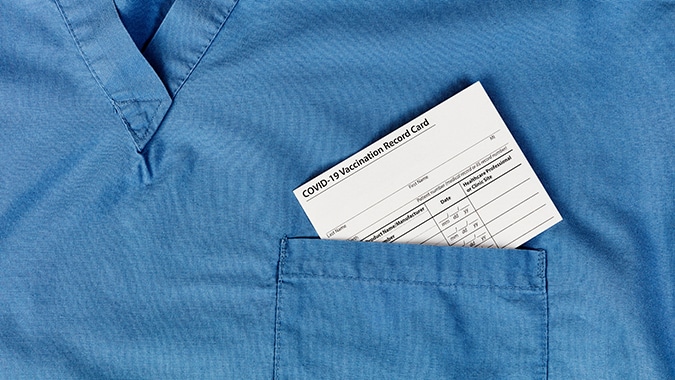The Treasury Department and the Internal Revenue Service today released updated state-by-state figures for Economic Impact Payments, with approximately 130 million individuals receiving payments worth more than $200 billion in the program's first four weeks.
"We are working hard to continue delivering these payments to Americans who need them," said IRS Commissioner Chuck Rettig. "The vast majority of payments have been delivered in record time, and millions more are on the way every week. We encourage people to visit IRS.gov for the latest information, FAQs and updates on the payments."
More than 150 million payments will be sent out, and millions of people who do not typically file a tax return are eligible to receive these payments. Payments are automatic for people who filed a tax return in 2018 or 2019, receive Social Security retirement, survivor or disability benefits (SSDI), Railroad Retirement benefits, as well as Supplemental Security Income (SSI) and Veterans Affairs beneficiaries who didn't file a tax return in the last two years.
For those who don't receive federal benefits and didn't have a filing obligation in 2018 or 2019, the IRS continues to encourage them to visit the Non-Filer tool at IRS.gov so they can quickly register for Economic Impact Payments. People can continue to receive their payment throughout the year.
| Economic Impact Payments, totals by State. | ||||
| State | Statepostal code | Number of EIP Payments | Total Amount of EIP Payments | |
| Alabama | AL | 1,996,007 | $ 3,428,443,628 | |
| Alaska | AK | 277,432 | $ 486,006,748 | |
| Arkansas | AR | 1,216,253 | $ 2,128,987,406 | |
| Arizona | AZ | 2,734,978 | $ 4,712,311,770 | |
| California | CA | 13,564,730 | $ 22,465,995,771 | |
| Colorado | CO | 2,141,841 | $ 3,618,352,193 | |
| Connecticut | CT | 1,325,813 | $ 2,162,539,412 | |
| Delaware | DE | 385,599 | $ 646,913,592 | |
| District of Columbia | DC | 252,095 | $ 349,400,662 | |
| Florida | FL | 9,169,713 | $ 15,173,922,832 | |
| Georgia | GA | 4,069,403 | $ 6,937,057,497 | |
| Hawaii | HI | 542,426 | $ 923,960,321 | |
| Iowa | IA | 1,230,814 | $ 2,212,426,465 | |
| Idaho | ID | 672,496 | $ 1,255,712,382 | |
| Illinois | IL | 4,844,140 | $ 8,169,566,380 | |
| Indiana | IN | 2,742,791 | $ 4,855,661,708 | |
| Kansas | KS | 1,098,473 | $ 1,980,223,913 | |
| Kentucky | KY | 1,878,814 | $ 3,282,818,708 | |
| Louisiana | LA | 1,877,721 | $ 3,180,135,799 | |
| Maine | ME | 594,555 | $ 1,005,363,003 | |
| Maryland | MD | 2,186,404 | $ 3,575,993,478 | |
| Massachusetts | MA | 2,503,206 | $ 4,008,005,049 | |
| Michigan | MI | 4,081,884 | $ 7,045,417,642 | |
| Minnesota | MN | 2,124,142 | $ 3,714,368,466 | |
| Missouri | MO | 2,482,825 | $ 4,337,599,739 | |
| Mississippi | MS | 1,225,834 | $ 2,086,932,244 | |
| Montana | MT | 433,767 | $ 759,469,674 | |
| Nebraska | NE | 743,803 | $ 1,349,417,300 | |
| Nevada | NV | 1,279,890 | $ 2,131,071,471 | |
| New Hampshire | NH | 560,833 | $ 941,099,188 | |
| New Jersey | NJ | 3,208,179 | $ 5,287,240,934 | |
| New Mexico | NM | 851,449 | $ 1,442,523,522 | |
| New York | NY | 7,737,476 | $ 12,523,017,409 | |
| North Carolina | NC | 4,076,334 | $ 6,985,338,563 | |
| North Dakota | ND | 287,210 | $ 510,578,907 | |
| Ohio | OH | 4,916,174 | $ 8,322,111,961 | |
| Oklahoma | OK | 1,556,747 | $ 2,777,598,152 | |
| Oregon | OR | 1,658,586 | $ 2,782,872,801 | |
| Pennsylvania | PA | 5,215,824 | $ 8,821,284,132 | |
| Rhode Island | RI | 446,941 | $ 725,567,957 | |
| South Carolina | SC | 2,060,588 | $ 3,522,197,950 | |
| South Dakota | SD | 343,860 | $ 625,042,408 | |
| Tennessee | TN | 2,881,709 | $ 4,980,110,718 | |
| Texas | TX | 10,728,541 | $ 18,796,209,760 | |
| Utah | UT | 1,075,546 | $ 2,091,334,753 | |
| Vermont | VT | 267,295 | $ 450,251,509 | |
| Virginia | VA | 3,196,178 | $ 5,456,000,257 | |
| Washington | WA | 2,856,962 | $ 4,875,983,730 | |
| West Virginia | WV | 784,111 | $ 1,363,560,122 | |
| Wisconsin | WI | 2,307,675 | $ 4,025,320,018 | |
| Wyoming | WY | 225,830 | $ 407,690,034 | |
| Foreign addresses | 595,548 | $ 977,830,929 | ||
Economic Impact Payment help available on IRS.gov
IRS.gov has a variety of tools and resources available to help individuals and businesses navigate Economic Impact Payments and get the information they need about EIP and other CARES Act provisions.
Economic Impact Payment FAQs: The IRS is seeing a variety of questions about Economic Impact Payments, ranging from eligibility to timing. These FAQs provide an overview and are updated frequently. Taxpayers should check the FAQs often for the latest additions; many common questions are answered on IRS.gov already, and more are being developed.



